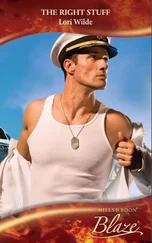Tom Wolfe - The Right Stuff
Здесь есть возможность читать онлайн «Tom Wolfe - The Right Stuff» весь текст электронной книги совершенно бесплатно (целиком полную версию без сокращений). В некоторых случаях можно слушать аудио, скачать через торрент в формате fb2 и присутствует краткое содержание. Жанр: Современная проза, на английском языке. Описание произведения, (предисловие) а так же отзывы посетителей доступны на портале библиотеки ЛибКат.
- Название:The Right Stuff
- Автор:
- Жанр:
- Год:неизвестен
- ISBN:нет данных
- Рейтинг книги:3 / 5. Голосов: 1
-
Избранное:Добавить в избранное
- Отзывы:
-
Ваша оценка:
- 60
- 1
- 2
- 3
- 4
- 5
The Right Stuff: краткое содержание, описание и аннотация
Предлагаем к чтению аннотацию, описание, краткое содержание или предисловие (зависит от того, что написал сам автор книги «The Right Stuff»). Если вы не нашли необходимую информацию о книге — напишите в комментариях, мы постараемся отыскать её.
The Right Stuff — читать онлайн бесплатно полную книгу (весь текст) целиком
Ниже представлен текст книги, разбитый по страницам. Система сохранения места последней прочитанной страницы, позволяет с удобством читать онлайн бесплатно книгу «The Right Stuff», без необходимости каждый раз заново искать на чём Вы остановились. Поставьте закладку, и сможете в любой момент перейти на страницу, на которой закончили чтение.
Интервал:
Закладка:
Slayton possessed a forcefulness that people often failed to detect at first. His remarks may not have convinced many skeptics within the Society of Experimental Test Pilots. Nevertheless, they became, in effect, the keynote address of the campaign that began inside NASA.
By now, September 1959, Slayton and the rest of them realized that, as Glenn had first divined, the astronaut corps was like a new branch of the service and that in this new branch no one outranked them. Certainly Robert Voas didn't outrank them. Voas was a Navy lieutenant who had been designated as the astronauts' training officer. Voas was neither a flight instructor nor an aeronautical engineer but an industrial psychologist who had been chosen precisely because the training of astronauts was regarded not as a form of pilot training but as a form of psychological adaptation. Voas was no older than they and ranked below them even in the regular military; so one of the boys' first moves was to see that Voas, as training officer, functioned more like a trainer on a sports team and, in any case, not like the coach. They began telling him what their training schedule was going to be. Voas became a coordinator and spokesman for the astronauts in matters of training.
Gordon Cooper had been frowned upon a few months before when he complained about the lack of supersonic fighter planes for "proficiency" flying, but now the boys took up his complaint within the corridors of NASA, with Slayton and Schirra leading the way and Voas arguing their case for them. Soon they had two F-102s on loan from the Air Force. The ships were somewhat the worse for wear, however—absolute junkers, in fact, in the eyes of the seven pilots. The Air Force had sloughed these wrecks off on them like hand-me-downs. The poor condition of the F-102s wasn't the worst of it, however. The galling thing was that the F-102, which had been one of the first in the Century series, was by now a back number. It would go supersonic but just barely, Mach 1.25 being about top speed. Wally Schirra knew how to formulate the argument on this score. Wally was not merely an expert prankster; he could also turn stern and bang the table and conjure up the aura of the right stuff and its privileges and prerequisites without once uttering the unspoken things. Wally would say to the brass: You're presenting us to the American people as the seven best test pilots in America, and we are among the best, all the p.r. aside, and yet you're not even giving us the opportunity to keep up our proficiency! Before I joined this program I was flying fighter aircraft capable of Mach 2 or better. And now we're supposed to keep up our proficiency with a couple of old clunkers that will hardly go Mach 1 even when they're in half-decent shape. It doesn't make any sense! It's as if you decided to prepare a major-league ball club for World Series competition by having them take a year off to play against a bunch of old crocks in a Parks & Recreation league in south Jersey. Wally was terrific in moments like this; and by and by, the boys would get a couple of F-106s, which were second-generation F-102s and capable of Mach 2.3. In the meantime, they tried to make do with the F-102s. But, hell, even flying F-102s was a big step beyond the original training agenda—which assumed that proficiency flights of whatever sort would be of no use for the astronaut in Project Mercury. Nor had this assumption yet died, Wally and Deke or no Wally and Deke.
At the Woods Hole conference Voas described the advantages of the F-102 flights in sustaining the astronauts' "decision-making abilities," and an aviation psychologist from the University of Illinois, Jack A. Adams, could scarcely believe what he was hearing.
"Frankly," he said, "I cannot see how decision making, or any other type of response, for that matter, in the F-102 can transfer significantly to the comparatively unique responding required of the astronaut in the Mercury vehicle." Then he added: "The astronaut's task is actually more like a radar observer's job than a pilot's." Another aviation psychologist, Judson Brown of the University of Florida, was just as baffled: "It has been frequently mentioned that skilled pilots must be used for Mercury, for the X-15, and the Dyna-Soar projects. Clearly, the use of skilled pilots seems to be of much less importance for Mercury than for the other two. There is a serious question whether positive transfer will occur from pilot training to Mercury capsule operation."
Inside NASA, however, this position was no longer tenable. From a sheerly political or public relations standpoint, the astronaut was NASA's prize possession, and the seven Mercury astronauts had been presented to the public and the Congress as great pilots, not as test subjects. If they now insisted on being pilots, great or otherwise—who was going to step in and say no? The boys sensed this; or as Wally Schirra put it, they realized they had "a fair amount of prestige around the country." So next they began whittling down the number of medical and scientific experiments they were expected to take part in—the guinea-pig stuff—simply by characterizing them as useless or stupid and cutting them out of their schedules. Here they tended to have the support of Gilruth's chief of operations, Walt Williams. Williams was a big hearty powerful-looking engineer who had been one of the true geniuses of the X series at Edwards, the man who had turned supersonic flight test into a precise and rational science. Williams was a flight-line engineer; he didn't have much patience with matters of flight test that were not operational . The one engineer who didn't mind letting it be known that Astropower, as it came to be called, was getting out of hand was one of Williams's lieutenants, Christopher Columbus Kraft, Jr. Chris Kraft was a hard-driving young man, thirty-six years old, urbane and sharp-witted, as aeronautical engineers went, and he was scheduled to be flight director for Mercury; but he didn't yet have the clout to do much of anything where the astronauts were concerned. The seven men pressed on. They were tired of the designation of "capsule" for the Mercury vehicle. The term as much as declared that the man inside was not a pilot but an experimental animal in a pod. Gradually, everybody began trying to work the term "spacecraft" into NASA publications and syllabuses. Next the men raised the question of a cockpit window for the spacecraft. As it was now designed, the Mercury capsule had no window, just a small porthole on either side of the astronaut's head. His main way of seeing the outside world would be through a periscope. A window had been regarded as an unnecessary way of inviting rupture due to changes in pressure. Now the astronauts insisted on a window. So the engineers went to work designing a window. Next the men insisted on a hatch they could open by themselves. The hatch, as currently designed, would be bolted shut by the ground crew. In order to leave the capsule after splashing down, the astronaut would either have to slither out through the neck, as if he were coming out of a bottle, or wait for another crew to unbolt the hatch from the outside. So the engineers went to work designing a hatch with explosive bolts so that the astronaut could blow it off by hitting a detonator. It was too late to incorporate the new items into the capsule—the spacecraft —that would be used for the first Mercury flight. That vehicle was already badly behind schedule as it was. But they would be in each craft thereafter…
And why? Because pilots had windows in their cockpits and hatches they could open on their own. That was what it was all about: being a pilot as opposed to a guinea pig. The men hadn't stopped with the window and the hatch, either. Not for a moment. Now they wanted… manual control of the rocket ! They weren't kidding! This was to take the form of an override system: if the astronaut believed, in his judgment, as captain of the ship (not capsule ), that the booster rocket engine was malfunctioning, he could take over and guide it himself—like any proper pilot.
Читать дальшеИнтервал:
Закладка:
Похожие книги на «The Right Stuff»
Представляем Вашему вниманию похожие книги на «The Right Stuff» списком для выбора. Мы отобрали схожую по названию и смыслу литературу в надежде предоставить читателям больше вариантов отыскать новые, интересные, ещё непрочитанные произведения.
Обсуждение, отзывы о книге «The Right Stuff» и просто собственные мнения читателей. Оставьте ваши комментарии, напишите, что Вы думаете о произведении, его смысле или главных героях. Укажите что конкретно понравилось, а что нет, и почему Вы так считаете.











